Effective Check Valve Selection and Placement for Industrial Piping Systems
When planning a check valve installation, the primary goal is to achieve a valve and piping system that offers the longest service life at the lowest cost. Accomplishing this goal while also ensuring that the system operates effectively and efficiently requires several considerations.
As a world-class manufacturer of high-quality check and control valves, DFT® understands the challenges of choosing the optimal valve for a piping system. To facilitate the selection process for our customers, we put together the following guide outlining how to choose and implement the right valve.
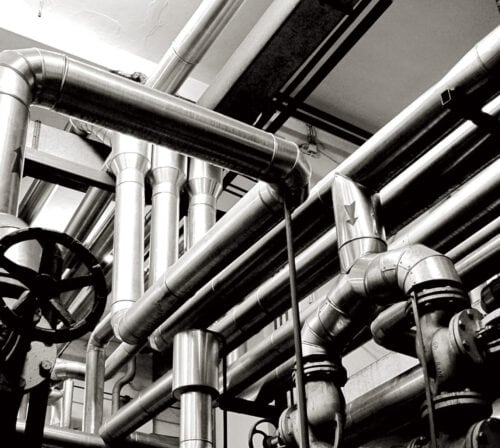
Principles of Piping Design
In general, optimal piping system designs follow three basic principles:
- There must be a 5-10x nominal pipe size (NPS) of straight pipe on either side of the valve, i.e., both the upstream and the downstream sides of the valve.
- The minimum pressure to open a check valve is referred to as the cracking pressure. However, to fully operate a valve, the system requires twice the differential pressure.
- While many styles of check valves will work in horizontal piping, only axial flow (“silent”) check valves are suitable for use in vertical piping. Whenever possible, a horizontal line is preferred since it rules out gravity, but vertical piping must be considered for flows that require up or down transport.
Common Piping Design Mistakes
Following the above principles facilitates the proper configuration of check valves in a piping system with minimal need for maintenance and maximum reliability. However, many industry professionals may find it challenging to navigate the nuances of pipeline design. Some of the most common mistakes made when designing a pipeline involve:
Valve Location
As mentioned in Principle #1, valves should have enough clearance—i.e., straight pipe—on either side from other pipeline components, such as pumps, elbows, expansion joints, and other valves, to function properly. When positioned upstream, these components can cause turbulence, which affects the performance of the check valve and can cause increased wear and, consequently, failure. The same can be said of other types of valves, such as ball valves and control valves; they perform best when the media flow is laminar, not turbulent.
Axial flow check valves can be installed close to the inlet of an isolating value if it is full port and fully open.
Flow Conditions
As outlined in Principle #2, there must be enough pressure to keep the valve fully open under minimum, normal, and maximum flow conditions. It is not enough to match the valve size to the pipe; it is necessary to do the sizing calculations to pick the right sized valve for the given flow conditions.
Vertical Pipe Runs
Avoid using swing check valves in vertical pipes. The downward flow keeps the valve open, and the upward flow leads to water hammer from the disc slamming against the seating. As specified by Principle #3, use only axial flow check valves in vertical pipes. The strong spring of the axial flow check valve avoids water hammer by ensuring that the valve closes before the reverse flow happens.
Choosing the Best Check Valve for Your Application
There are several factors to keep in mind when choosing a valve for a piping system. These selection considerations include:
Valve Location
As required by Principles 1 & 3 above, the location of a valve is important; horizontal piping is preferred for all valves except axial flow check valves, and there must be sufficient straight piping on either side of the valve.
Valve Size
Check valves remain open only when there is sufficient pressure in the line. Therefore, the pressure available with minimum flow must be considered along with maximum and normal flow conditions while selecting the valve. This is the requirement per Principle #2 above.
Valve Material
When choosing a valve material, the main focus is on choosing one that is compatible with the characteristics of the piping and requirements of the application (i.e., temperature, pressure, corrosion resistance, etc.). This generally results in the body material of the valve matching the flange material of the pipe. For example, a carbon steel line typically features a carbon steel valve body. Carbon steel is the most commonly employed valve material, with cast iron and stainless steel following close behind.
Types of Valves Used in Industrial Piping
Valves find use in a variety of industrial piping system applications. Typical applications include:
- Preventing reverse flow (check valves)
- Managing the flow of process fluids, including concentrated acids and bases
- Redirecting flow from one line to another
- Restricting flow for system balancing purposes
- Controlling cooling rates to regulate temperature
- Stopping flow during a system failure
Industry professionals employ a wide range of valves to fulfill the above functions, depending on the requirements and restrictions of their unique application. Some of the most common valve types used are:
- Check valves have a disc, stem, or a similar moving part that closes if the flow reverses or stops.
- Ball valves are the most common type of valve and feature a ball with a round hole in the center. When aligned with the pipe, the valve is ON. When turned 90°, it is OFF.
- Diaphragm valves are used for precise flow control, especially when the media contains solids.
- Flanged valves use bolts to secure the connection and a gasket to seal the joint.
- Gate valves turn flow ON and OFF with a vertical disc that moves up and down.
- Globe valves regulate flow with a disk that moves relative to a stationary ring seat.
- Needle valves are similar to a globe valve, but they use a tapered plug for finer flow control.
- Relief valves are safety valves that prevent excessive pressure buildup in the system.
- Wafer valves in general have a smaller footprint in the system.
In addition to the valves listed above, there are many other types available, each of which is suitable for varying industrial applications.
If you need a valve for your pipeline, DFT®, Inc. delivers. With over 75 years of experience manufacturing high-quality check valves and control valves, we can provide you with a valve solution that meets your needs. Check out our product page to find out about our valve offerings or contact us today with your questions or project specifications.





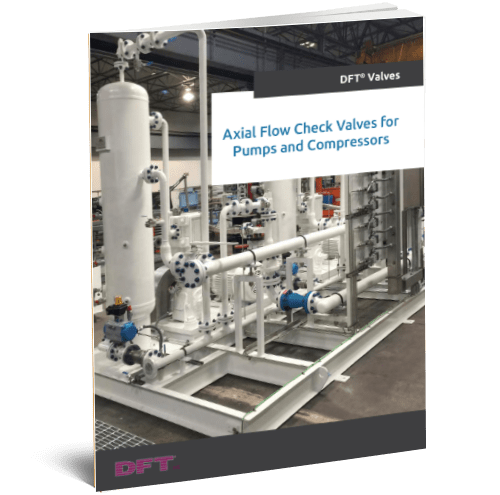
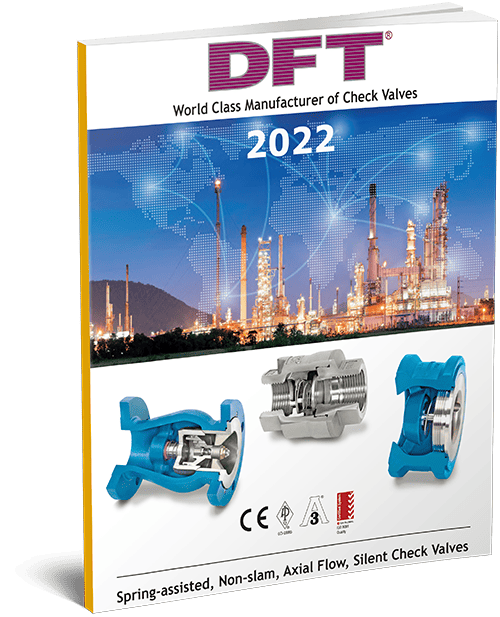
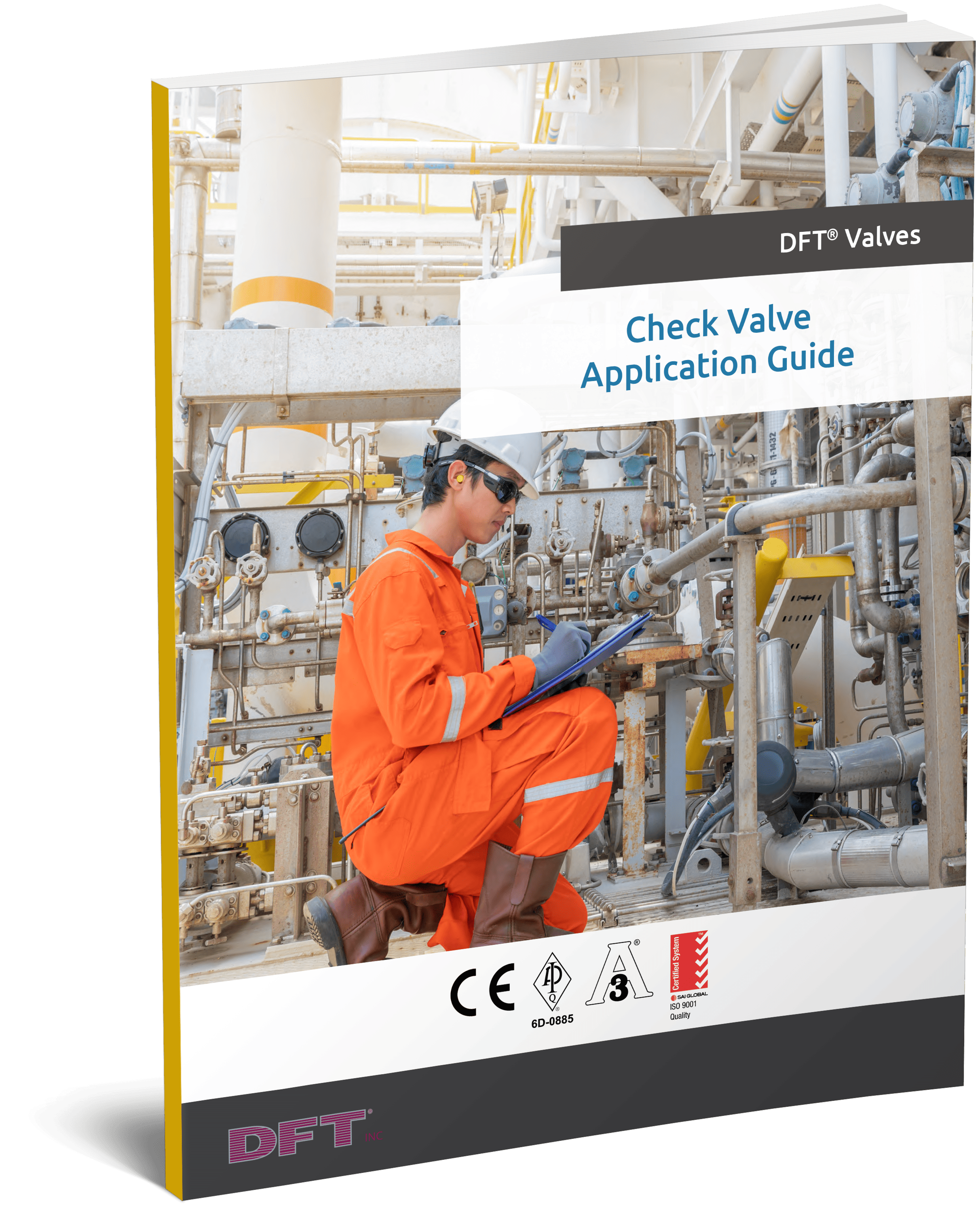

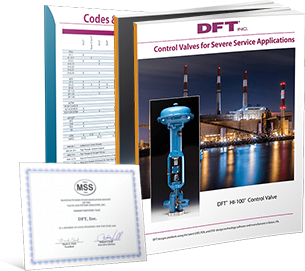
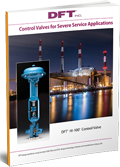
Comments are closed